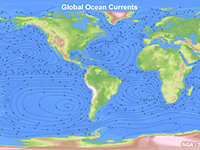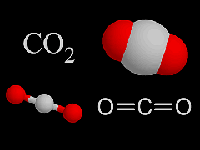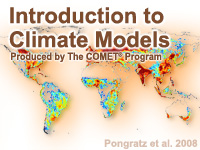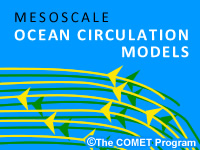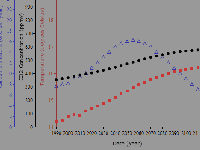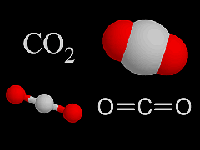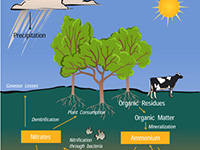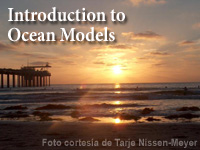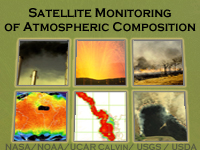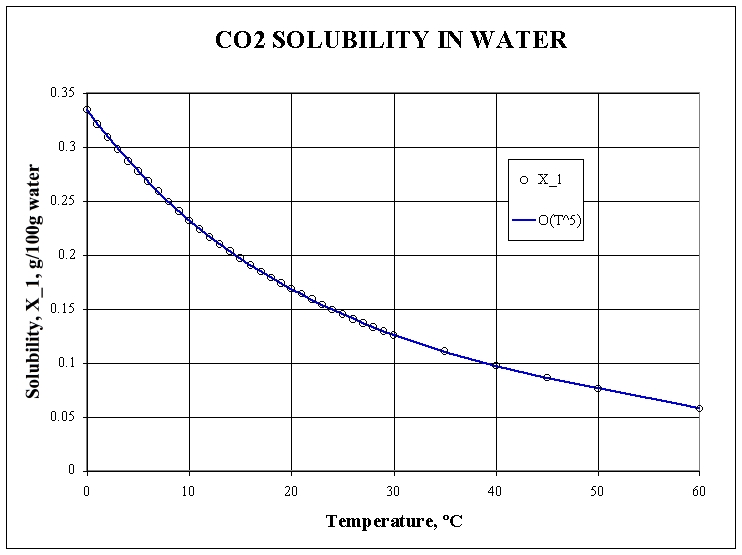COMET MetEd Advanced Education Resources(free login required)
Introduction to Ocean Currents
The world’s oceans are in constant motion. Currents move vast amounts of water at all depths. These currents directly impact many human activities on a daily basis. Activities as diverse as shipping, fishing, oil and gas activities, and military operations must account for currents. More indirectly, but no less important, ocean currents redistribute heat, which affects atmospheric processes. In this way, ocean currents impact nearly all maritime operations. [...]
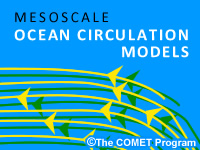 Mesoscale Ocean Circulation Models
Mesoscale Ocean Circulation Models
This module examines mesoscale ocean circulation models and features and processes that they predict. These models simulate temperature, salinity, currents, and elevation in 3 dimensions through a period of time. They have sufficient resolution to simulate features like fronts, eddies, upwelling, and internal tides. In this module, we examine current operational models, limitations to model forecasts, examples of predicted ocean features, and potential applications. [...]
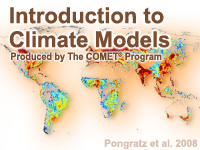 Introduction to Climate Models
Introduction to Climate Models
This module explains how climate models work. Because the modeling of both weather and climate share many similarities, the content throughout this module draws frequent comparisons and highlights the differences. We explain not only how, but why climate models differ from weather models. To do so, we explore the difference between weather and climate, then show how models are built to simulate climate and generate the statistics that describe it. We conclude with a discussion of models are tuned and tested. [...]
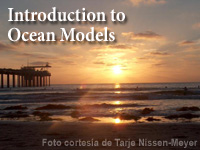 Introduction to Ocean Models
Introduction to Ocean Models
Oceans cover over 70% of the surface of the earth, yet many details of their workings are not fully understood. To better understand and forecast the state of the ocean, we rely on numerical ocean models. Ocean models combine observations and physics to predict the ocean temperature, salinity, and currents at any time and any place across the ocean basins. This module will discuss what goes into numerical ocean models, including model physics, coordinate systems, parameterization, initialization, and boundary conditions. [...]
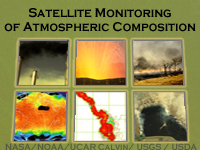 Satellite Monitoring of Atmospheric Composition
Satellite Monitoring of Atmospheric Composition
Satellite monitoring of atmospheric composition provides important information for a number of applications, including stratospheric ozone monitoring, long-range pollutant transport, biomass burning, air quality monitoring and forecasting, and climate change. This module provides an overview of the use of satellites in these application areas, the measurement techniques used, and the development of related operational services. [...]
UCAR Center for Science Education K-12 Resources

What do soda and the oceans have in common?
Grade level: 9-12
Students will use soda to explore how carbon dioxide is able to dissolve into liquid. They will learn about Henry's law, which describes how the solubility of gas into liquids is dependent on temperature and develop hypotheses about how the amount of carbon dioxide in the atmosphere, a greenhouse gas, is affected by rising atmospheric and oceanic temperatures. [...]
CO2: How Much Do You Spew?
Grade level: secondary education
Students analyze the energy consumption of a hypothetical household to determine the amount of carbon dioxide they are adding to the atmosphere each year. [...]
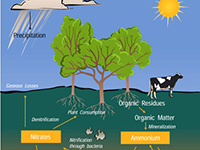 The Nitrogen Cycle Game
The Nitrogen Cycle Game
Grade level: 5-9
Students play the role of nitrogen atoms traveling through the nitrogen cycle to gain understanding of the varied pathways through the cycle and the relevance of nitrogen to living things. [...]
 The Very Simple Climate Model
The Very Simple Climate Model
Grade level: 6-12
Through a simple online model, students learn about the relationship between average global temperature and carbon dioxide emissions while predicting temperature change over the 21st Century. [...]
K-3 Videos - A researcher on the project put together a wonderful set of short videos targeted to a younger audience about ORCAS and field research.
Letter from the Project Manager
ORCAS Digital Camera Imagery and Movie Notes
NCAR / Scripps Airborne Flask Sampler
